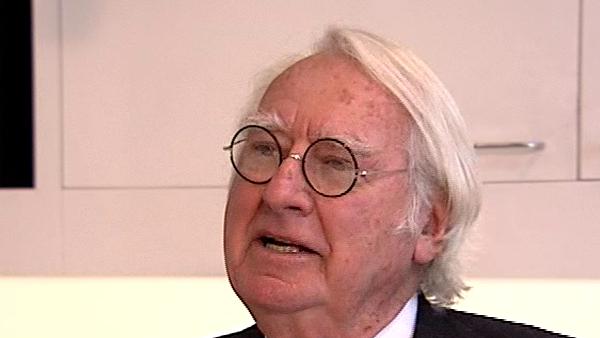NEXT STORY

My contemporaries at Cornell
RELATED STORIES

NEXT STORY

My contemporaries at Cornell
RELATED STORIES


|
Views | Duration | |
|---|---|---|---|
| 1. 'I'm going to be an architect' | 762 | 02:07 | |
| 2. Why Cornell? | 341 | 01:56 | |
| 3. My contemporaries at Cornell | 1 | 295 | 01:35 |
| 4. Meeting Le Corbusier | 528 | 04:10 | |
| 5. A beach house in Fire Island | 453 | 01:56 | |
| 6. Westbeth Artists' Housing | 342 | 01:57 | |
| 7. The Bronx Developmental Center | 283 | 01:25 | |
| 8. The Smith House | 545 | 03:06 | |
| 9. Photographing architecture is more than art | 275 | 02:21 | |
| 10. My small-scale work influenced my large-scale projects | 260 | 01:06 |

So then after I said I was going to be an architect, then I had to figure out what that meant. And I started looking at what schools had architectural courses and three schools, sort of, stood out in my search: University of Pennsylvania, Cornell and MIT. My father had graduated from MIT and so he was very thrilled that I was even considering going to his alma mater. And so one weekend we went to Boston and looked at MIT, and then went to Ithaca and looked at Cornell, and went to Philadelphia and looked at Penn. I applied to all three and I got accepted at all three. And my father said: 'Oh good, you're going to go to MIT'. I said: 'Well, Dad, I hate to disappoint you but I'm going to go to Cornell'.
[Q] Why?
It was the most beautiful school. I mean it's amazing, just idyllic in every respect. It was really the most beautiful campus, the most beautiful setting. I was too young to be able to discern, you know, the difference between the educational qualities of the three schools, but it just seemed to me, you know, Cornell was just so far and away a better and physical environment in which to study. And MIT was like a factory and University of Pennsylvania is, sort of stuck in the city. You know, I said: 'There's no question'. So I chose Cornell and I'm very happy I did.
The prominent American architect Richard Meier (b. 1934) is best known for the Getty Centre in Los Angeles, one of his many public projects which broke from his usual style of sleek, white buildings. In all his work – carried out with characteristic refined style – he refuses to bend to the trends of modern architecture. He has won many awards including the Pritzker Prize for Architecture, considered the field's highest honour.
Title: Why Cornell?
Listeners: Massimo Vignelli
Massimo Vignelli was born in Milan and studied architecture in Milan and Venice. He is the co-founder and President of Vignelli Associates and Chief Executive Officer of Vignelli Designs in New York. His work includes graphic and corporate identity programs, publication designs, architectural graphics, interiors, furniture, and consumer product designs. His work has been published and exhibited throughout the world and entered in the permanent collections of several museums. He has taught and lectured on design in the major cities and universities in the United States and abroad. Included among Massimo Vignelli's awards are the Gran Premio Triennale di Milano, 1964, the Compasso d'Oro, awarded by the Italian Association for Industrial Design (ADI), 1964 and 1998, the 1982 Art Directors Club Hall of Fame, the 1983 AIGA Gold Medal, the 1992 Interior Product Designers Fellowship of Excellence, The 1995 Brooklyn Museum Design Award for Lifetime Achievement and The 2001 Russel Wright Award for Design Excellence.
Tags: Cornell University, University of Pennsylvania, MIT
Duration: 1 minute, 56 seconds
Date story recorded: March 2007
Date story went live: 23 December 2008